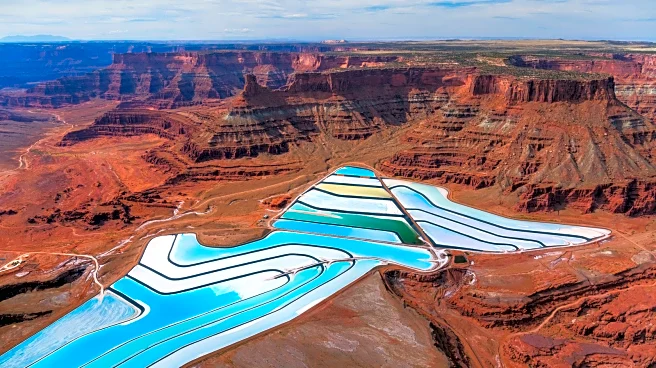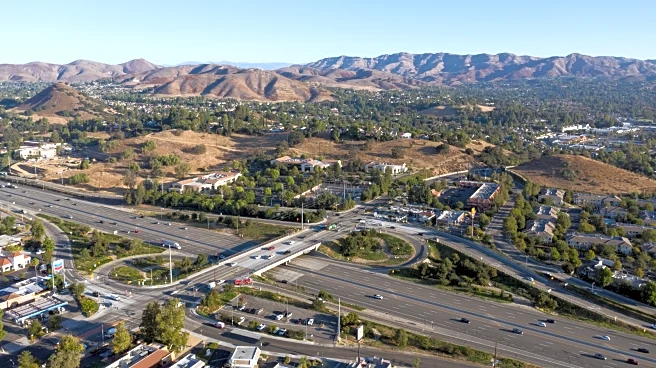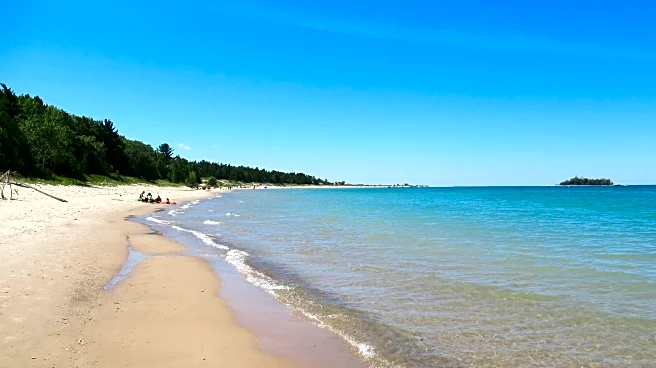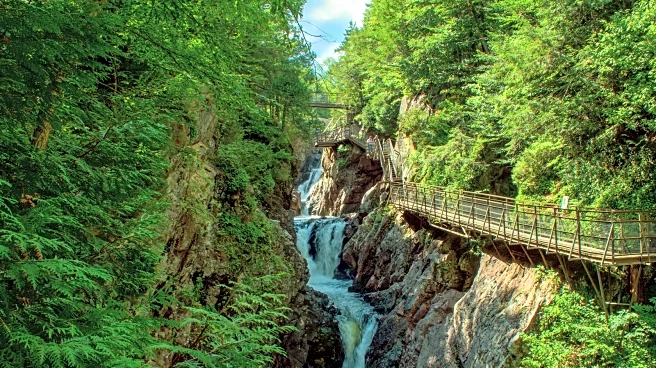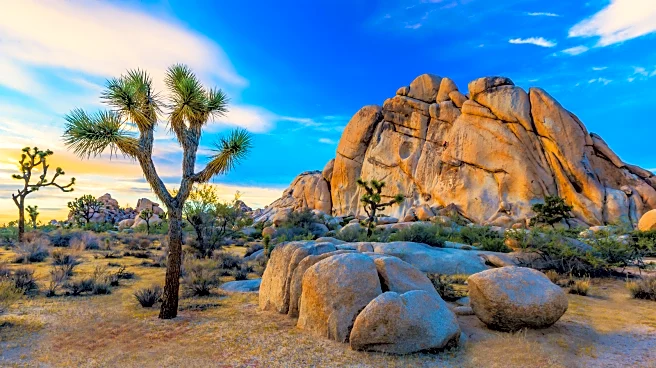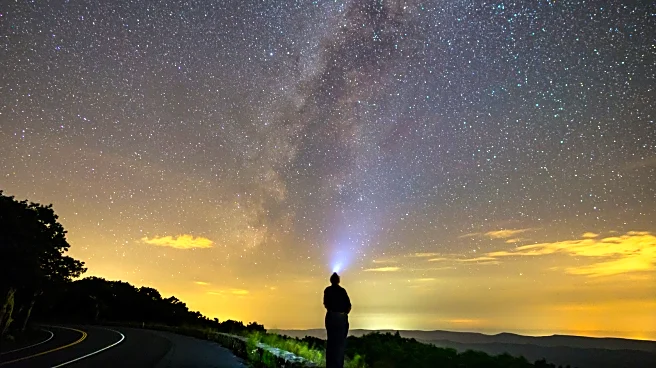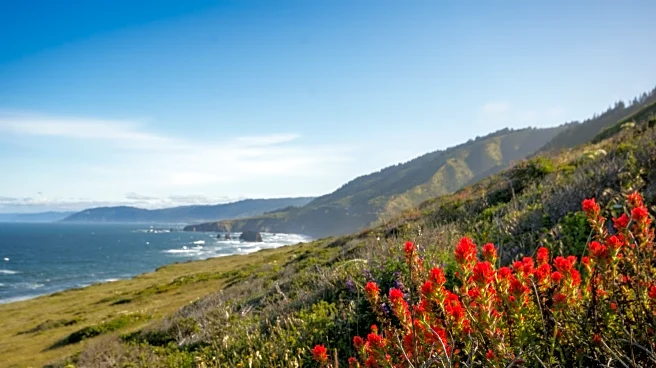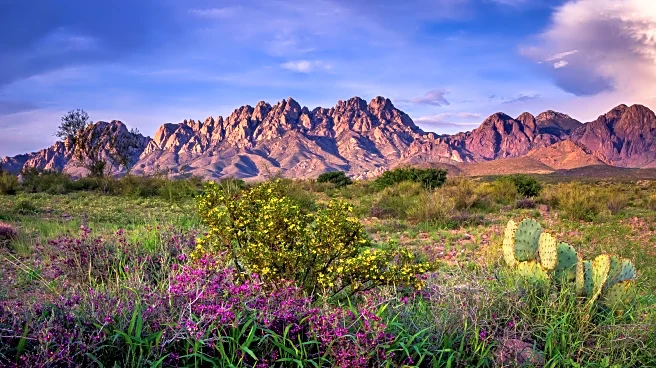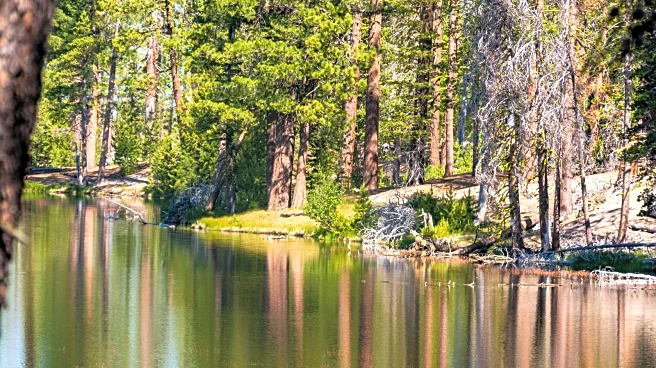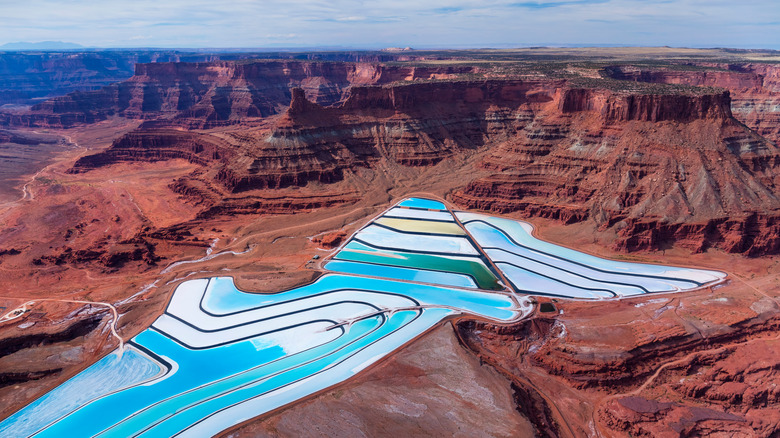
Imagine you're on a plane, flying back home, and watching the panoramas from the window. As you approach Canyonlands National Park's barren desert and vibrant canyons, you see something glittering, like a mirage in the sand — actually, the color you're seeing is electric blue, much like Italy's Spiaggia dei Conigli with crystal clear waters. Is this real, or are you dreaming? These are the potash ponds of Utah that stand out with their eye-catching pools in the middle of the desolate landscape, a jarring
anomaly against the desert ochres and earthy tones. It's not a coincidence that these ponds are situated here — their purpose is to extract potassium chloride from their surroundings. To put it simply, you won't be taking a dip in this pool — ever.
Utah's potash ponds aren't a natural phenomenon — these evaporation pools were set up by Intrepid Potash, Inc. While the fertilizer manufacturing company owns three other similar mines in the country, it's the Utah ponds that make heads turn. Basically, miners need to get to the potassium-containing salt ore, located around 3,900 feet underground. This involves extracting water from the Colorado River to penetrate that section. The water then liquefies the potash into a brine, after which it's poured into the ponds.
But if potash is red, why is the water so azure? Also not a natural occurrence — just the simple use of blue dye. Thanks to the lighter color, the water can retain more heat, which speeds up the crystallization process. When seen from above, you'll notice that the pools boast different hues of blue, sometimes yellow and orange. This shows that each pond is in a different stage of evaporation. As a result, you get to marvel at an otherworldly sight, making for the ultimate photography opportunity in the vast Utah desert.
Read more: The 5 Best Hidden Hot Spring Hikes In California
How To Safely View The Utah Potash Ponds
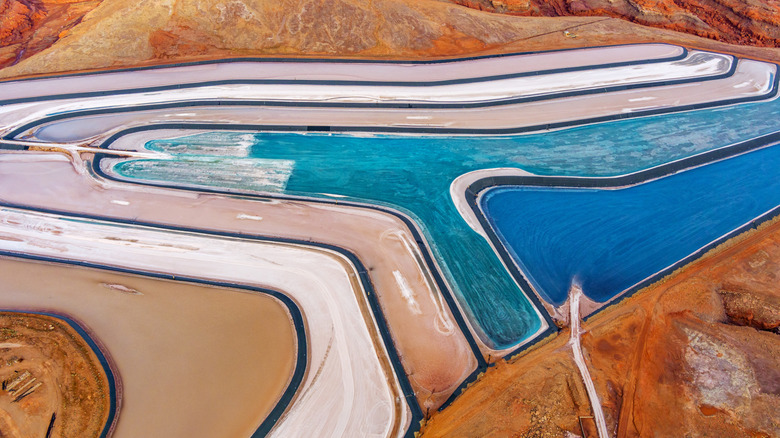
Since this is an industrial zone, swimming in the pools is dangerous due to the amount of brine, dye, and potash found in the water — they are pure eye candy to enjoy. The potash ponds are located in Moab, Grand County, about 21 miles from Route 191. They can even be visible from a plane if you're flying over Southern Utah. As Moab serves as your gateway to Canyonlands and Arches National Parks, you can easily add this place to your itinerary on your way to either of them.
Those exploring the backcountry in Canyonlands National Park can follow the Potash Road on State Route 279. Also known as the Potash Scenic Byway, it traces the Colorado River, winding along rough paths and bumpy sections for more than 17 miles. To get to the observation point, you need to have a 4x4 vehicle to successfully drive up the canyon since ATVs and any other off-road vehicles are not allowed in the park. You'll marvel at the striking arid landscape of Dead Horse Point State Park, an underrated destination with iconic Grand Canyon views minus the crowds. Soon enough, you'll spot the cerulean and ultramarine hues of the pools. While you're there, hike the trail to Elvis Rock, too — the geological formation boasts gorgeous scenery of the potash ponds.
If you don't have a 4x4 vehicle but really want to see the ponds, make your way to Dead Horse Point State Park. Not only is the road well-marked, but you can also get there no matter what kind of car you're driving. Continue along the Shafer Trail (which merges with Potash Road in Canyonlands) to arrive at the overlook. From then on, all you have to do is take your camera out and capture the extraordinary spectacle.
Top Tips For Carefully Visiting The Vivid Pools
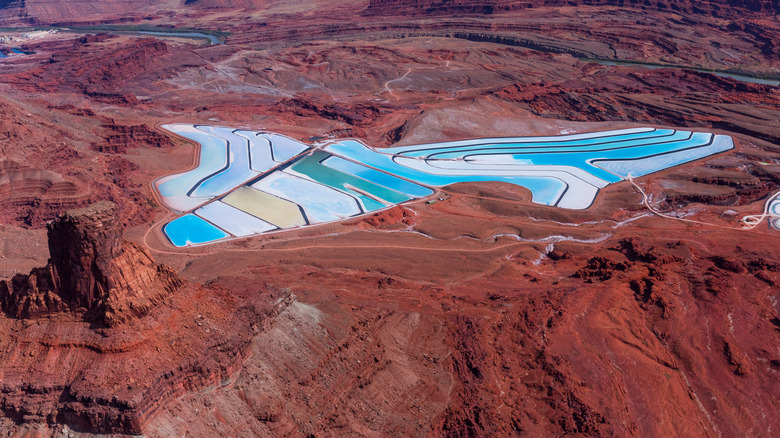
There are a few things to consider when visiting the potash ponds, especially if you're going to tackle either of the trails. For starters, you're going to need the essentials: water, sunscreen, a hat, proper shoes, and a decent camera. On top of that, those hiking to Elvis Rock won't have access to any kind of facilities. Since there's little shading on the way, try to get there early in the morning so it's not as hot.
Your best bet for taking high-quality pictures of the pools is with an adequate zoom lens, be it a high-resolution camera or your phone. For aerial photos, you can use a drone to snap pictures as long as you also follow certain rules. The ponds are Intrepid Potash, Inc.'s property, so you can't fly a drone directly over them — make sure you use your camera only within the boundaries of the Bureau of Land Management property. Otherwise, you'll need to reach out to the company for permission. In any case, you can still get good shots without crossing into private property.
As for seeing them at their brightest and bluest, the summer months bring out the most saturated hues. While they remain active throughout the year, this season is when the evaporation process reveals the true richness of the pools — you might even see some of the staff harvesting potash on the spot. Utah is one of those states where every single point on the map has a hidden gem — no matter where you end up driving, you discover something new. When you wish to explore more red rock canyons, national monuments, and dinosaurs, the off-the-tourist-trail city of Blanding is only two hours from the potash ponds.
Ready to discover more hidden gems and expert travel tips? Subscribe to our free newsletter for access to the world's best-kept travel secrets.
Read the original article on Islands.
